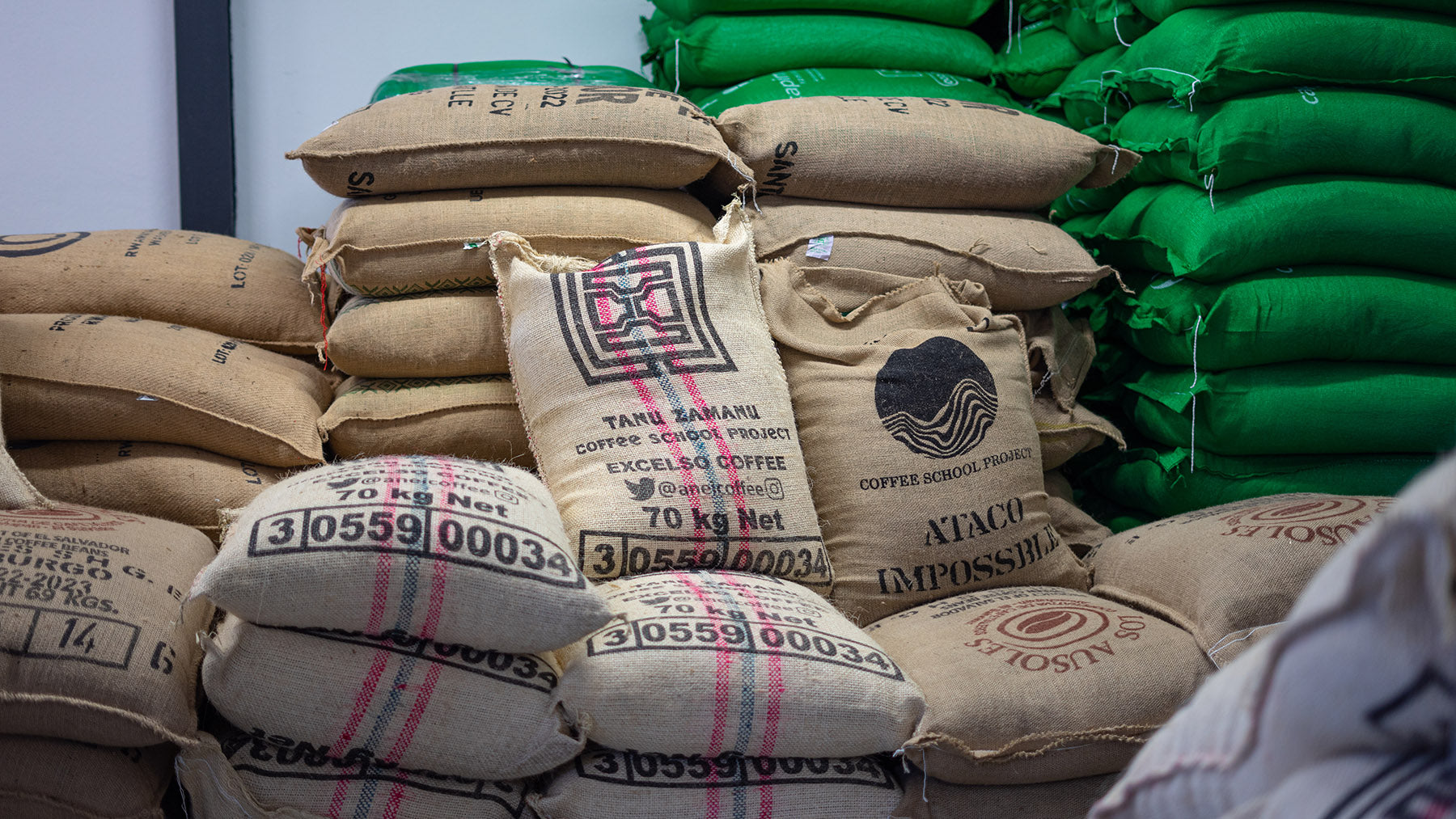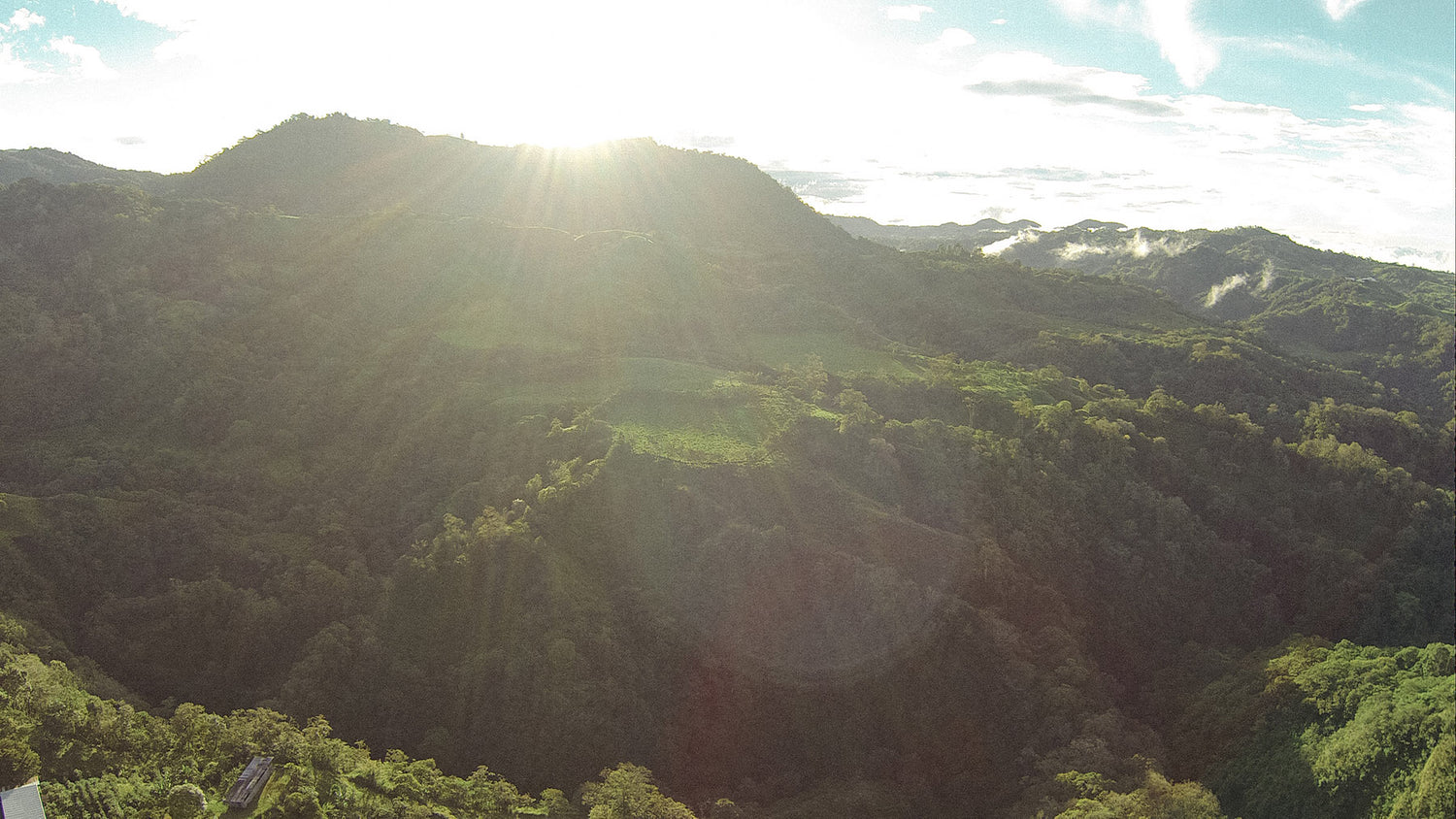80/20, 70/30 or even 50/50 - there are many coffee blends on the market. And then the question immediately arises as to what a blend is. In short, it is a mixture. But that sounds easier than it is. As a roaster, you first have to find the right mixture. This involves types of coffee and also coffee from different countries as well as mixing ratios and mixing methods. We will now take a closer look at all of this.
Coffee blends – what is a blend?
When we and other roasters talk about a blend, we mean a coffee that is made up of beans from different countries and/or a mixture of different varieties. The best example is a blend made up of Arabica and Robusta beans. For example, our poacher is such a blend: 80 percent Arabica and 20 percent Robusta. The Robusta content makes this blend strong, dark and spicy. But a blend can also consist of 100 percent Arabica or 100 percent Robusta. In this case, the mixture is made up of coffees from different countries. For example, beans from Colombia and beans from Brazil.
Coffee blends – why you blend
The idea behind this is that every country has its own bean taste characteristics and the beans used complement each other to create a delicious bouquet. Another reason for a blend is that you can create a consistent and balanced taste across different harvests. A counterexample is single origin – coffee that comes from just one country or even just one farm. Here, each harvest can vary greatly in taste, as coffee is a natural product and is constantly subject to change. Basically, a blend can consist of many different coffees, but we don't think there should be more than four. Preferably just three. Because there should be at least 20 percent of each variety in a blend so that you can still get the flavor nuances of each bean. A little calculation.
Coffee Blends – Mathematics
Let's assume we have a kilogram of espresso blend. Let's take our Out of the Dark. It has beans from Brazil, El Salvador and India in the mix. 40 percent Brazil, 30 percent El Salvador and 30 percent India (Robusta). So one kilogram consists of 400 grams of Brazilian beans and 300 grams each of El Salvador and India beans. You make an espresso (double shot).
So you take 19 grams. The probability that this contains almost 8 grams of Brazilian beans and almost 6 grams of each of the other two types is high. If you had a blend with 6, 7 or more components, the probability that there would be something from each bean in your double shot would decrease. This would mean that your espresso would taste different every time. And nobody wants that.

Coffee blends – when is blending done?
There are two times when it comes to blending, or mixing different coffees. You can blend coffee before or after roasting. We blend before roasting. This has the advantage that the beans react more uniformly during roasting, thus creating a very harmonious blend. Of course, there can be small deviations because the beans are different sizes, for example. With so-called post-roasting coffee blending, you roast each variety for the coffee blend individually and then mix them. The advantage here is that each type of coffee is roasted optimally and you get the best aroma out of each variety. This approach offers more control over the roasting process, but also requires more time and effort.
Coffee blends – how to find the right blend
We all know that trying is better than studying. And that's more or less how roasters find the right blend. And it usually starts with knowledge. As an experienced roaster, you know the country-specific cup profiles, know what a coffee will taste like, i.e. more nutty, chocolaty or fruity, and can therefore make a pre-selection of which coffees are suitable for blending. And you usually don't blend the most exclusive varieties. For example, it wouldn't make sense to blend a Geisha. Because then the fine and complex flavor nuances of the coffee would be lost somewhere. This is also because blends are usually roasted a little darker, or blends are more common in espresso roasts and possibly even omniroasts. You can also make light blends, no question about it. It just doesn't happen that often. And then comes the tasting.
Coffee Blends – Cupping and Blending
So you usually mix coffees that you know are suitable for this. Brazil, Guatemala, Colombia and similar. One way is to do a cupping. So you prepare two, three or even four coffees from different
 countries, maybe also Arabicas and Robustas and make small blends. So one sip of this, three sips of another and so on. And at some point it will *CLICK* and you have found the perfect blend. And then you just try it out and roast a batch. But perfect is always subjective in this context. Because just because the blend is well-rounded and balanced and the roaster likes it, doesn't mean that you will like it too.
countries, maybe also Arabicas and Robustas and make small blends. So one sip of this, three sips of another and so on. And at some point it will *CLICK* and you have found the perfect blend. And then you just try it out and roast a batch. But perfect is always subjective in this context. Because just because the blend is well-rounded and balanced and the roaster likes it, doesn't mean that you will like it too.
Coffee blends – how do I find the right blend for me
At this point I can only say again: "The proof of the pudding is in the eating!" The best thing to do is to find out what you like best: espresso or coffee. And then which flavour you prefer: nutty, chocolatey, fruity. And then you can actually pick a blend: if you like it fruitier and espresso, then choose the Wildsau from our range. If you prefer chocolatey and spicy, then choose the Wilderer . And so you test out a few different blends and maybe different roasters and find out over time what you like.
Coffee Blends – FAQ
Is a blend not as high quality as a single origin?
No, we cannot confirm that. If the coffees you use in a blend are of high quality, then the blend will also be of high quality. As with wine: there are high-quality cuvées and equally good wines that consist of just one grape. The important thing with a blend is that there are not too many different varieties in it. In our opinion, a maximum of five coffees.
Why do we blind?
Blending coffee produces a round and balanced taste with many nuances of the coffees used. Blended coffee can also remain more consistent in taste over the years and harvests, unlike single origin coffee.
How is blinding done?
There are two ways to make a blend: before roasting and after. This means you mix different green coffees and roast them together, or you roast the individual components separately and mix them after roasting. Both have advantages and disadvantages. Pre-blending (i.e. before) is particularly suitable for coffee beans that behave similarly when roasted. With post-blending (mixing after roasting) you can get the best out of each bean and, above all, mix very different varieties. However, this requires more work overall. With pre-blending there is a risk that some beans will be over-roasted and some under-roasted.
Coffee Blends - Conclusion
I hope you have gained a little insight into the daily tasks of a roaster and why blends exist in the first place. Whether you are a blend fan or a purist looking for the ultimate single origin is entirely up to you. Both are great and should be celebrated. And never forget, you can also be coffee-fluid: in other words, like single origins as much as blends. Depending on the situation and preference. #staywild


